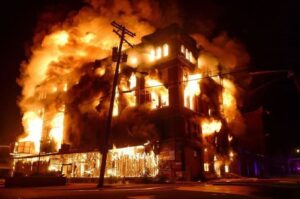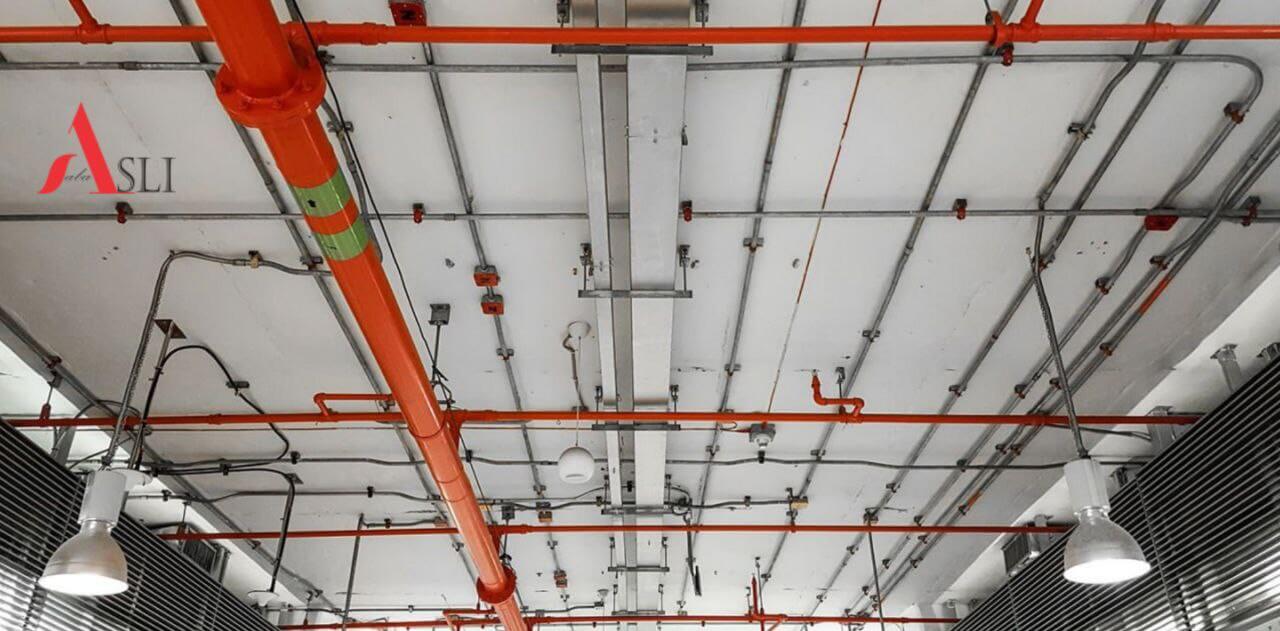What is the importance of fire extinguishing system design?
Fires in buildings under construction are more dangerous than in completed buildings. While the design of fire suppression and protection systems to minimize fire losses is usually not completed until late in the construction schedule. In order to prevent or control fire casualties, the necessary planning should be done for the design of the fire extinguishing system.
Fire hazards in different stages of construction:
The following steps should be considered separately during different projects and appropriate measures should be taken for each one: 1. Site setup 2. Preliminary work 3. Internal work and installation of equipment 4. Testing and commissioning 5. Conversion or renovation work 6. Site facilities 7. On-site storage of materials
1) Setting up the construction site
The main fire hazards at this stage of the construction project are due to the following: 1. Assembling and especially commissioning electrical installations on site 2. Use and storage of flammable liquids and combustible gases 3. Excavation near gas pipes and existing electrical cables 4. Temporary storage and disposal of flammable waste As soon as work begins on the building site, appropriate fire protection measures must be taken.
2) Preliminary works
This phase of construction is characterized by the extensive use of combustible auxiliary materials such as scaffolding and wooden forms and plastic tarps. Fire potential also increases due to flammable materials used in construction. The risk of fire also increases with certain types of work done at this stage, such as welding, flame cutting. Smoking in construction sites is also considered a risk.
3) Internal work and installation of equipment
This stage is generally considered the greatest risk. Fire risk and concentration values increase continuously as the building work progresses, peaking at the completion stage of the project when the building or plant is handed over. The intensity of fire also increases significantly due to the materials used in interior works such as wood, cork, plastic, insulating materials, as well as the installation of equipment such as floors, ceilings, and related packaging materials.
4) Testing and commissioning
The risk of fire during the testing and commissioning phase of a project can be extremely high depending on the type of facility in question. Electrical installations are tested for continuity, then they are put under load. Sometimes the use of fuels, lubricants and flammable materials is also involved. The operational reliability and safety facilities of the factory must be checked with special tests that are carried out under unusual and even severe working conditions. Technical units or parts of the power plant that are overheated may pose a greater risk until the cooling and regulating systems are properly operated or employed. Leaks can also occur in gas or oil pipelines, especially in hydraulic systems.
5) Conversion and renovation work
There is usually a greater risk of fire during conversion and renovation work than during the final completion stages of new projects because, unlike today, wood was once a common building material. The fact that buildings being altered or renovated are often still in use, at least in part, suggests another problem.
6) Site facilities
Facilities on construction sites are mainly of temporary type and light construction. They contain significant amounts of combustible materials. Using such temporary installations in an inappropriate manner or not in accordance with their intended purpose may cause electrical overload or overheating of the equipment. Temporary heating installations on many construction sites also pose a significant fire hazard.
7) On-site storage of materials
Storage of materials and equipment awaiting use or installation leads to a high concentration of quantities in a limited space. Packaging materials significantly increase the potential for fire in these storage areas.


